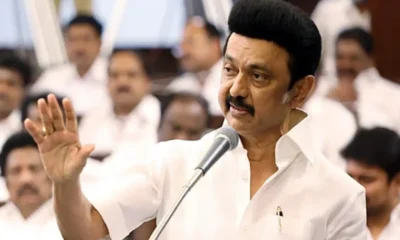Gadgets
Indian scientists at Pune’s NIV detect new strain of dengue virus

Gadgets
Oppo Reno 15 likely to launch in India soon with upgraded camera and performance features
Oppo is preparing to launch the Reno 15 series in India, focusing on camera improvements, performance stability and a refined design. Here’s what to expect from its pricing and features.
Gadgets
Samsung Galaxy S25 FE India price leak suggests launch similar to S24 FE
Samsung Galaxy S25 FE India price has surfaced online, hinting at a similar launch price as the S24 FE. The phone brings a 6.7-inch AMOLED display, Exynos 2400 chip, triple rear cameras, and a 4,900mAh battery.
Gadgets
iPhone 17 series launched in India: Price starts at Rs 82,900, goes up to Rs 2.29 lakh
Apple has launched the iPhone 17 series in India with prices starting at Rs 82,900. Pre-booking begins on 12 September, and the phones will be available from 19 September.
-

 India News14 hours ago
India News14 hours agoBJP minister claims rift between Rahul and Priyanka Gandhi over Parliament speeches
-

 India News17 hours ago
India News17 hours agoGRAP IV enforced in Delhi amid severe pollution: What remains open and what shuts down
-

 India News12 hours ago
India News12 hours agoBharat Taxi to launch in Delhi on January 1 as cooperative alternative to app-based cabs
-

 India News12 hours ago
India News12 hours agoDelhi orders 50% work from home as pollution emergency deepens
-

 India News7 hours ago
India News7 hours agoLok Sabha passes SHANTI Bill, opens civil nuclear sector to private participation
-

 Latest world news17 hours ago
Latest world news17 hours agoTrump administration expands US travel ban to 20 more countries, Palestinians also affected
-

 Latest world news17 hours ago
Latest world news17 hours agoPM Modi receives Ethiopia’s highest civilian honour, first world leader to get award
-

 India News7 hours ago
India News7 hours agoPassengers must pay charges for excess luggage on trains, says railway minister













